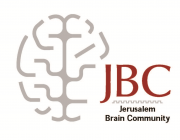
Itzhak Nussinovitch
Hormone secretion from the anterior pituitary (AP) gland, known also as the 'Master' endocrine gland, is under direct and constant control of hypothalamic releasing hormones (RHs) and neurotransmitters. AP cells are excitable; displaying cell-type specific spontaneous and stimulated rhythmic electrical activity. This electrical activity is generated by a repertoire of voltage-gated channels that are differently expressed in different pituitary cell-types. The voltage-gated Ca2+ influx (VGCI), which is coupled to this rhythmic electrical activity, plays a pivotal role in the secretion of AP hormones. This electrical activity and VGCI is constantly regulated by complex arrays of hypothalamic RHs and peripheral hormones. We are studying biophysical, pharmacological and functional properties of this VGCI in rat AP cells; in growth-hormone (GH) secreting cells (somatotrophs) and in prolactin secreting cells (lactotrophs). We recently revealed that this VGCI in somatotrophs and lactotrophs is carried through at least 5 Ca2+channel pathways (Cav1.2, Cav1.3, Cav2.1, Cav2.2 and Cav2.3), and that these 5 pathways are segregated among raft and nonraft membrane microdomains. Moreover, we demonstrated that these 5 pathways for VGCI regulate both 'basal' and 'stimulated' GH secretion, and that the proper function of these pathways in GH secretion depends on their compartmentalization in the membrane of pituitary cells. We assume that this existence of multiple pathways for VGCI in somatotrophs, and their compartmentalization, is being utilized for selective regulation, or fine-tuning, of GH secretion under different physiological, hormonal, or pathological conditions. We plan to further investigate the compartmentalization, at the surface membrane level, of Ca2+channels, SNARE proteins, GPCRs (for releasing-hormones) and their cognate signaling pathways. Of special interest will be to examine whether this compartmentalization provides the basis for the spatial organization of the exocytotic machinery on cell surface of somatotrophs, and thus for regulated GH secretion. These insights into sub-cellular and molecular mechanisms underlying GH secretion are also expected to provide basis for therapeutic treatments of GH related disorders (e.g., Acromegaly, gigantism, dwarfism, and obesity).

